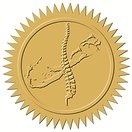
SCIENCE OF CHIROPRACTIC
Research
2021 Chiropractic Outcomes & Patient Satisfaction Synopsis - LINK
Studies by leading medical journals in recent years have confirmed the benefits and cost-efficacy of chiropractic care:
A 1993 report by the Ontario Ministry of Health concluded that chiropractic care was the most effective treatment for lower back pain. The agency also recommended that chiropractic care be fully integrated into the Canadian government’s health care system.
In 1994, the federal Agency for Health Care Policy and Research published its Clinical Practice Guidelines, which asserted that spinal manipulation was effective in reducing pain and speeding recovery among patients with acute low back symptoms, without radiculopathy.
A 1996 New England Journal of Medicine study of outcomes and costs for acute low back pain found that patients treated by chiropractors were significantly more satisfied than those who saw primary care, orthopedic, or managed care practitioners.
A 1996 study in the medical journal Spine echoed that study and found that patients who sought chiropractic care were more likely to feel that treatment was helpful, more likely to be satisfied with their care, and less likely to seek care from another provider for the same condition, compared to those who sought care from medical doctors.
In 2001, the Center for Clinical Health Policy Research, at Duke University, concluded that spinal manipulation resulted in almost immediate improvement for cervicogenic headaches, or those that originate in the neck, and had significantly fewer side effects and longer-lasting relief of tension-type headache than a commonly prescribed medication. LINK
This 2014 review identified limited evidence indicating that manual therapy techniques (eg, osteopathic spinal manipulation, physiotherapy consisting of manipulation and mobilization techniques, and chiropractic manipulation), in addition to other treatments or alone, are more cost-effective than usual GP care (alone or with exercise), spinal stabilization, GP advice, advice to remain active, or brief pain management, for improving low back pain and/or disability. Similarly, one study demonstrated that spinal manipulation, in addition to GP care, was more cost-effective than GP care alone in reducing shoulder pain and related disability. LINK
American College of Physicians 2017 Clinical Practice Guideline recommends non-invasive treatment for acute, subacute, and chronic back pain. Treatments such as spinal manipulation, contemporary medical acupuncture, rehabilitation, low-level laser therapy, and rehabilitation (all utilized in our clinic) are suggested as the first-line treatment options.
In 2021 The Official Journal of the College of Family Physicians of Canada classified the treatments for chronic low back pain by benefits and harms and offered further information. Exercise and spinal manipulation were the only modalities classified as “benefits likely exceed harms.” Whereas oral NSAIDs (benefits may not exceed harms), cortisone injections (no benefit), and opioids (harms likely exceed benefits) did not perform as well.
SAFETY
Research summary regarding cervical manipulation and “stroke.” DOWNLOAD
In 2008 the largest VBA medical study to date, encompassing 100 million-person years, found that strokes occur at a similar increased rate regardless of whether the patient sees a chiropractor for manipulation or their medical doctor for consultation. The authors found: “no evidence of excess risk of VBA stroke associated chiropractic care compared to primary care.“ This landmark paper discovered that patients in the developing stage of a stroke are more likely to visit a chiropractor or PCP for complaints of headache and neck pain. The study suggested that the chiropractic or medical doctor treatment was not the cause of the stroke, but rather a non-contributory mid-point of an undetected developing crisis. LINK
A risk assessment of cervical manipulation vs. NSAIDs (anti-inflammatories) for the treatment of neck pain. Conclusion of the 1995 paper? “The best evidence indicates that cervical manipulation for neck pain is much safer than the use of NSAIDs, by as much as a factor of several hundred times. There is no evidence that indicates NSAID use is any more effective than cervical manipulation for neck pain.” LINK
What about comparing taking NSAIDs (conventional first-line treatment for musculoskeletal pain) to cervical manipulation? Dabbs and Lauretti suggested that the risk of complications (eg, gastrointestinal ulcers, hemorrhage) or death from the use of nonsteroidal anti-inflammatory drugs (NSAIDs) is 100 to 400 times greater than for the use of cervical manipulation. LINK
Neurosurgeons reported in 2016 that… “There is no convincing evidence to support a causal link between chiropractic manipulation and CAD (stroke).” LINK

